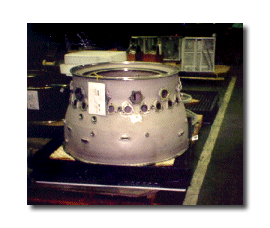
Industry Partners: Boeing, Pratt & Whitney, United Airlines
Objectives:
-
Improve fundamental understanding of anisotropy on radiography capabilities (Ti, Ni, and other alloys)
-
Incorporate anisotropic scattering into
models and utilize results to improve detection/characterization of casting defect
-
Implement results
in cooperation with industrial partners including techniques to minimize
effect of diffraction mottling from grain diffraction on images
Approach:
- Measure basic radiographic
properties and correlate with microstructure and grain orientation
- Determine relationship
between diffraction, grain orientation, shape, and size on film response
- Use energy sensitive
x-ray characterization procedures to determine spectra that contributes
to mottling
- Determine filtering
and image processing approaches to improve detectability without significant
loss in contrast sensitivity
- Implement improved
processes with industry partners

Grain diffraction causes considerable difficulty in evaluation of radiographic images in production and in service. The effects from normal grain structure can mimic response from parosity and cracks.
Products:
- Grain diffraction
models validated to insure they accurately represent real grain diffraction
effects for classes of applications
- Tool implemented in PC version of XRSIM for use by industry in inspection design
Links:
Copyright © 2002
For more information about CASR please contact:
Lisa Brasche
Iowa State University
casr@cnde.iastate.edu

